How do fish farms sell fish?
Are you curious about how fish farms turn their harvest into profit? The journey from a bustling fish farm to your dinner plate is a fascinating process involving multiple channels and strategies that ensure fresh, high-quality fish reach consumers efficiently.
Fish farms sell their products through a variety of channels, including direct sales to local markets and restaurants, wholesale distribution to processors and retailers, and increasingly, through online platforms that connect them directly with consumers. This diverse approach allows them to maximize their reach and profitability.
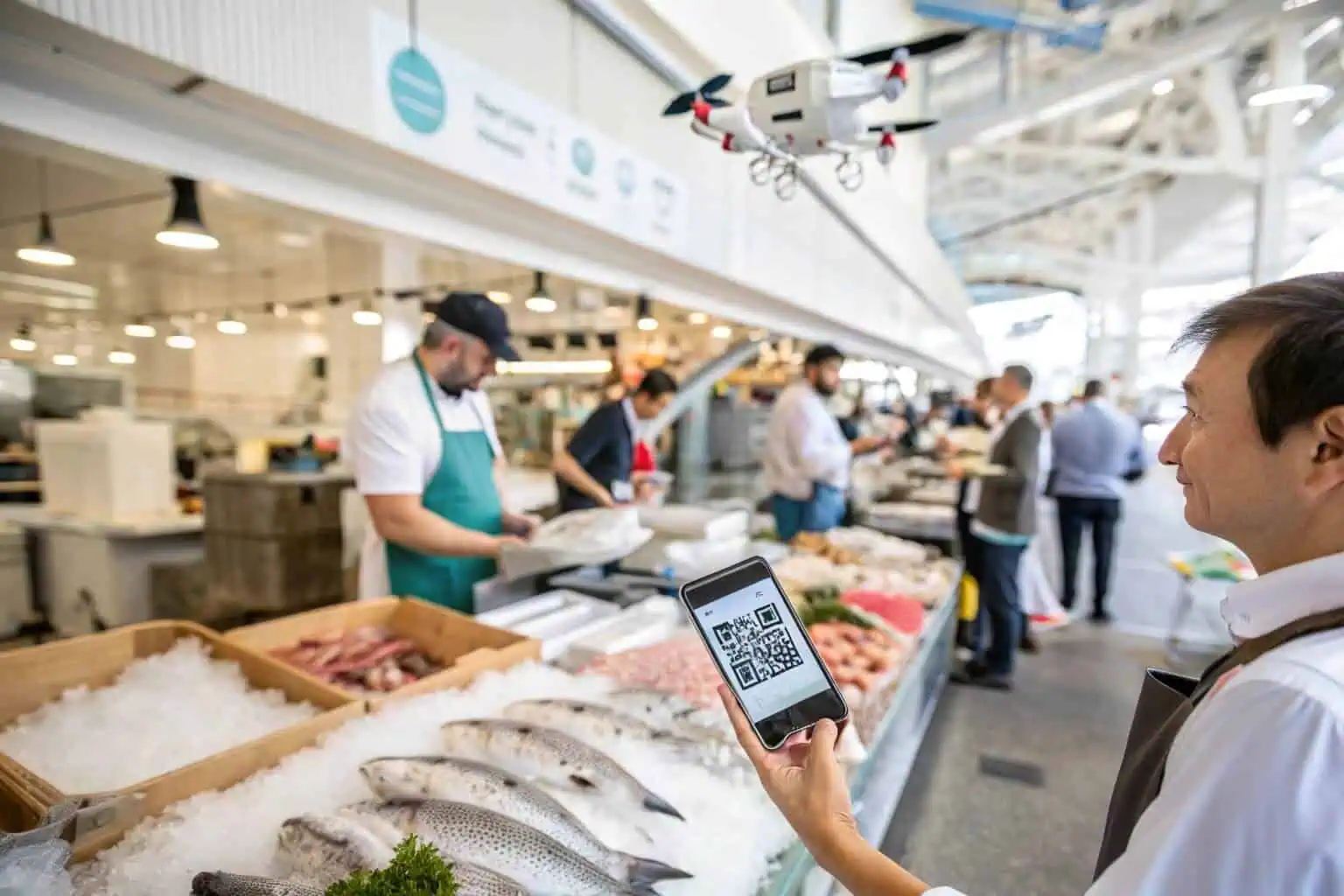
The path a fish takes from the farm to the consumer is more complex than it might seem. It involves careful planning, relationship building, and a deep understanding of market demands. For fish farmers, choosing the right sales channels is just as crucial as raising healthy fish. Let's explore the different ways they bring their products to market.
How do fish farms get their fish?
Ever wondered where the journey of a farmed fish begins? Before a fish can be sold, it must be raised, and that process starts with sourcing healthy, young fish, which is a critical first step for any successful aquaculture operation.
Fish farms typically source their fish from specialized hatcheries that provide healthy fingerlings. These young fish are then raised in controlled environments such as ponds, net pens, or indoor recirculating systems until they reach a marketable size, ensuring a steady and reliable supply for the market.
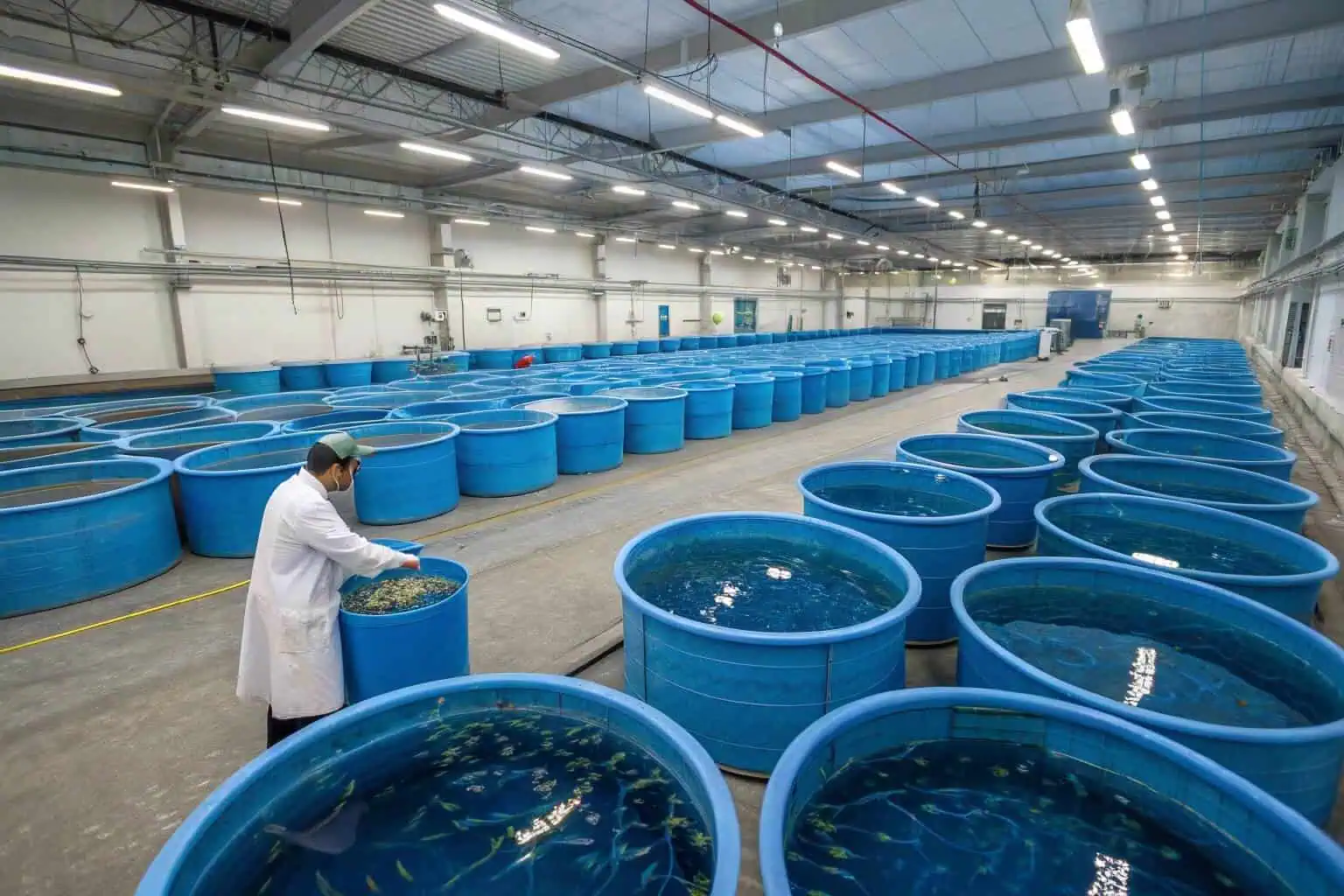
The initial stage of acquiring fish is foundational to the entire aquaculture business1. The quality of the fingerlings and the conditions in which they are raised are crucial. As an observer of the industry, I've seen how top farms manage this process to ensure a high-quality product.
The Role of Specialized Hatcheries
Successful fish farms don't leave reproduction to chance. They rely on specialized hatcheries2 to provide a consistent supply of healthy fingerlings. These hatcheries are experts in fish breeding and early-stage development, ensuring that the young fish are robust, disease-free, and ready for the grow-out phase. This partnership between farms and hatcheries is vital for maintaining a predictable and high-quality supply chain.
From Fingerling to Market Size: Cultivation Systems
Once the fingerlings arrive at the farm, they are transferred to cultivation systems to grow. The type of system used depends on the species, climate, and scale of the operation. Traditional ponds are common for hardy species like Tilapia and Catfish. For more sensitive or high-value species, modern indoor facilities with Recirculating Aquaculture Systems (RAS) offer a controlled environment. Our collapsible fish tanks are an excellent example of a flexible and efficient solution, allowing farmers to set up and manage a controlled environment with ease.
| System | Description | Best For | Advantages |
|---|---|---|---|
| Traditional Ponds3 | Earthen or concrete ponds filled with water. | Hardy species like Tilapia and Catfish. | Low initial cost, simple to manage. |
| RAS (Recirculating Aquaculture Systems4) | Indoor tanks with water treatment and recycling. | High-value or sensitive species. | High-density production, controlled environment, minimal water use. |
| Net Pens/Cages | Mesh enclosures placed in natural bodies of water. | Marine species like salmon. | Utilizes natural water bodies, lower infrastructure cost than RAS. |
| Collapsible Fish Tanks5 | Portable tanks made of durable materials like PVC. | Temporary or small-scale setups, various species. | Flexible, easy to set up, portable, cost-effective. |
How do commercial fishermen sell their fish?
While fish farms cultivate their stock, what about the fish caught in the wild? Commercial fishermen have a different set of challenges and opportunities when it comes to selling their catch, navigating a supply chain that connects the open sea to global markets.
Commercial fishermen sell their catch through several primary channels: directly to local restaurants and markets, to large-scale processors who prepare the fish for retail, or to exporters who ship the products to international markets. The choice of channel often depends on the type of fish, the volume of the catch, and market prices.
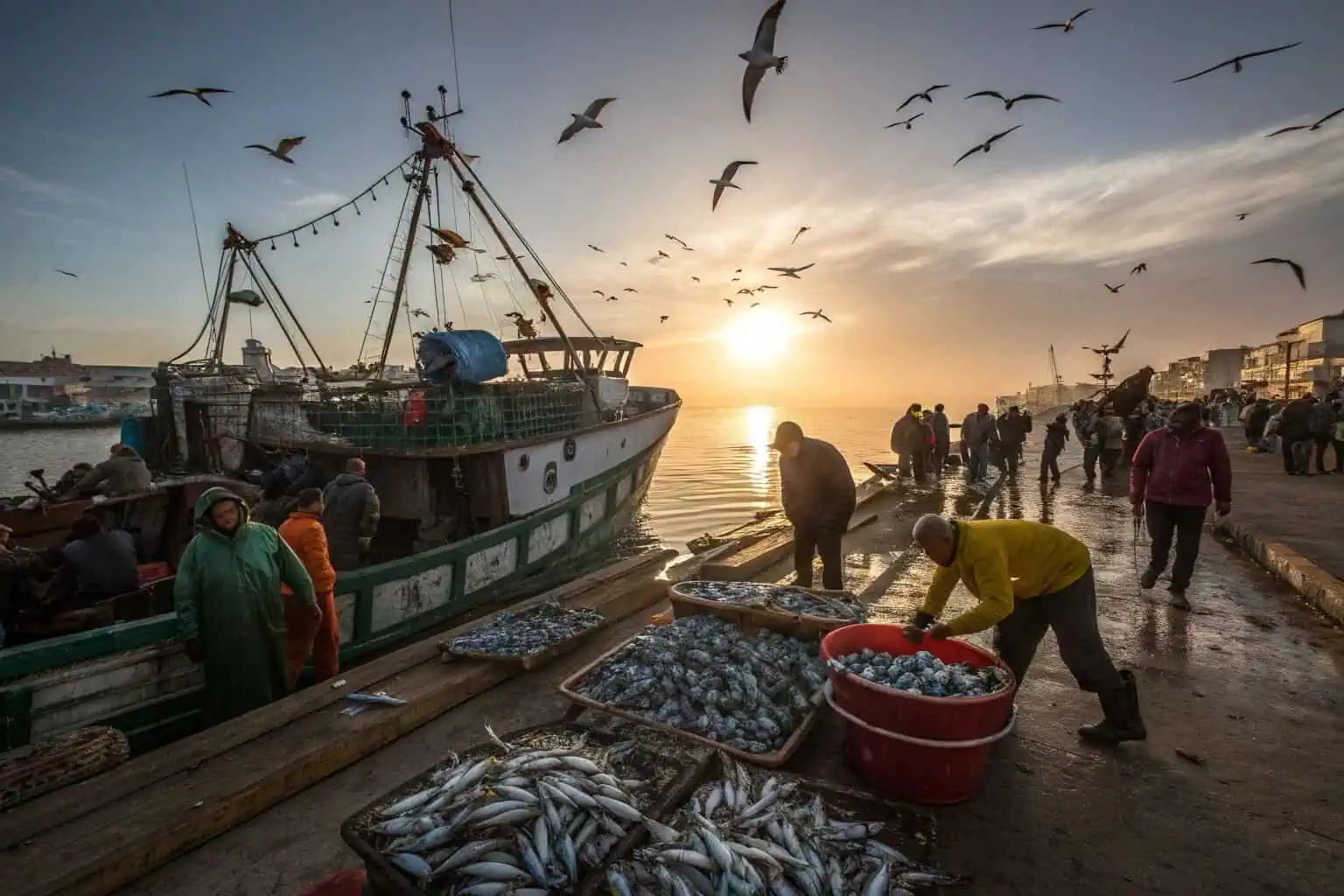
The life of a commercial fisherman is one of unpredictability, and their sales strategies6 must be just as adaptable. I've witnessed firsthand how fishermen make decisions on the fly to maximize their earnings based on the day's catch and current market prices.
Direct Channels: From Boat to Table
A fresh catch of a high-demand species like tuna or salmon7 can be sold directly to a local upscale restaurant for a premium price. This direct channel offers the best profit margins and builds strong local relationships. Similarly, selling at local farmers' markets allows fishermen to connect directly with consumers who are willing to pay more for fresh, high-quality seafood.
The Global Reach: Exporting and Processing
For large hauls of more common fish like cod or pollock, selling to a processing plant is often the most efficient option. These plants fillet, freeze, and package the fish for supermarkets and wholesale distribution. The export market also presents a significant opportunity, especially for species in high demand in other countries. While this requires navigating complex logistics and regulations, the financial rewards can be substantial.
| Sales Channel | Description | Advantages | Disadvantages |
|---|---|---|---|
| Direct to Consumer | Selling directly to individuals at farmers' markets or through a Community Supported Fishery (CSF) program8. | Higher profit margins, direct feedback from customers. | Requires more time and effort for marketing and sales. |
| Restaurants & Retailers9 | Supplying fresh fish to local restaurants, grocery stores, and fish markets. | Stable demand, potential for long-term relationships. | Lower prices than direct sales, requires consistent quality and delivery. |
| Processors & Wholesalers | Selling large volumes of fish to companies that process, package, and distribute to wider markets10. | Can handle large volumes, less effort in individual sales. | Lowest profit margins, less control over the final product. |
How much do fish farmers make a year?
The profitability of fish farming is a key question for anyone considering entering the industry. While it can be a lucrative business, a farmer's annual income is influenced by a multitude of factors, from the scale of the operation to the species of fish being raised.
A fish farmer's annual income can vary widely, with small-scale farmers earning around $30,000 to $50,000 per year, while large-scale operations can easily exceed $100,000 and, in some successful cases, reach several hundred thousand dollars, depending on market conditions and operational efficiency.
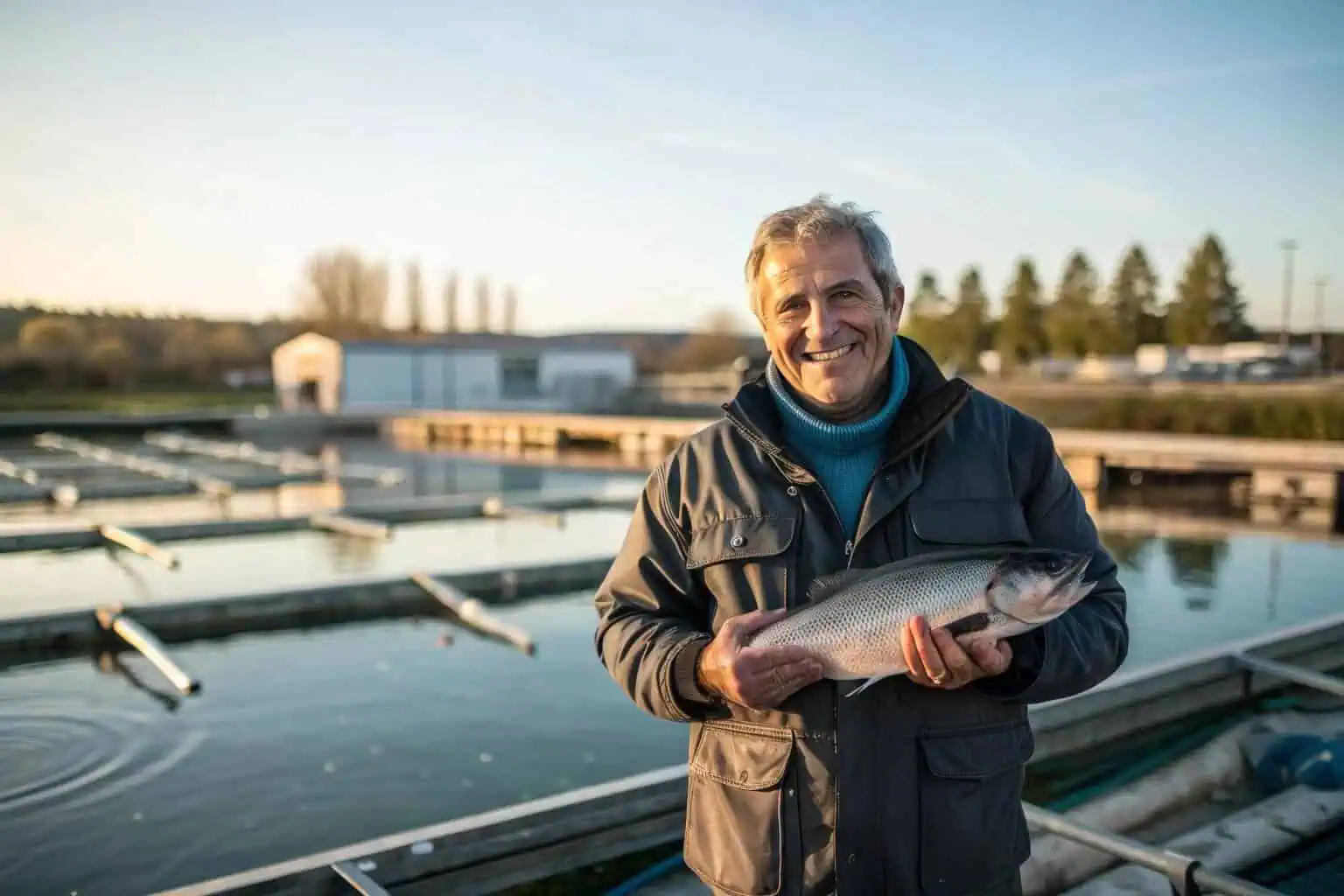
From my experience, the financial success of a fish farm is a delicate balance of art and science. It's not just about raising fish; it's about running a smart, efficient business11. Several key factors determine a farm's profitability.
The Spectrum of Earnings: From Small-Scale to Large-Scale
The scale of the operation12 is a critical variable. A small, family-run farm will have a different financial outlook than a large, commercial enterprise with multiple ponds and automated systems. While a small farm might provide a supplemental income, a large-scale operation13 has the potential for significant profits, though it also comes with higher investment and risk.
Key Factors Influencing Profitability
The choice of fish species14 is a major factor. High-demand species like salmon or shrimp can command higher prices but may also require more intensive management. In contrast, species like Tilapia are easier to raise and have a steady market. Effective cost management is also essential. This includes everything from feed, which can be a significant expense, to energy and labor costs. By optimizing these factors, fish farmers can significantly boost their profitability.
| Factor | Impact on Profitability | Management Strategy |
|---|---|---|
| Species Choice | High-demand species fetch higher prices but may have higher costs. | Select species based on market demand, climate, and operational capacity. |
| Feed Costs15 | Represents a major portion of operational expenses. | Optimize feeding schedules, use high-quality feed, explore alternative protein sources. |
| Water Quality | Poor water quality leads to disease and slow growth. | Implement regular monitoring and filtration; use systems like RAS for control. |
| Market Access | Proximity and access to diverse sales channels affect price. | Develop relationships with local buyers, explore online sales and export markets. |
How do people sell fish?
In today's interconnected world, the methods for selling fish have evolved beyond traditional markets. From bustling local stalls to sophisticated online platforms, there are more ways than ever for sellers to connect with buyers and for consumers to access fresh, high-quality fish.
People sell fish through a diverse range of methods, including traditional channels like local markets and wholesale distributors, as well as modern approaches such as online stores, subscription services, and direct-to-restaurant sales. This multi-channel strategy allows sellers to reach a broader customer base.
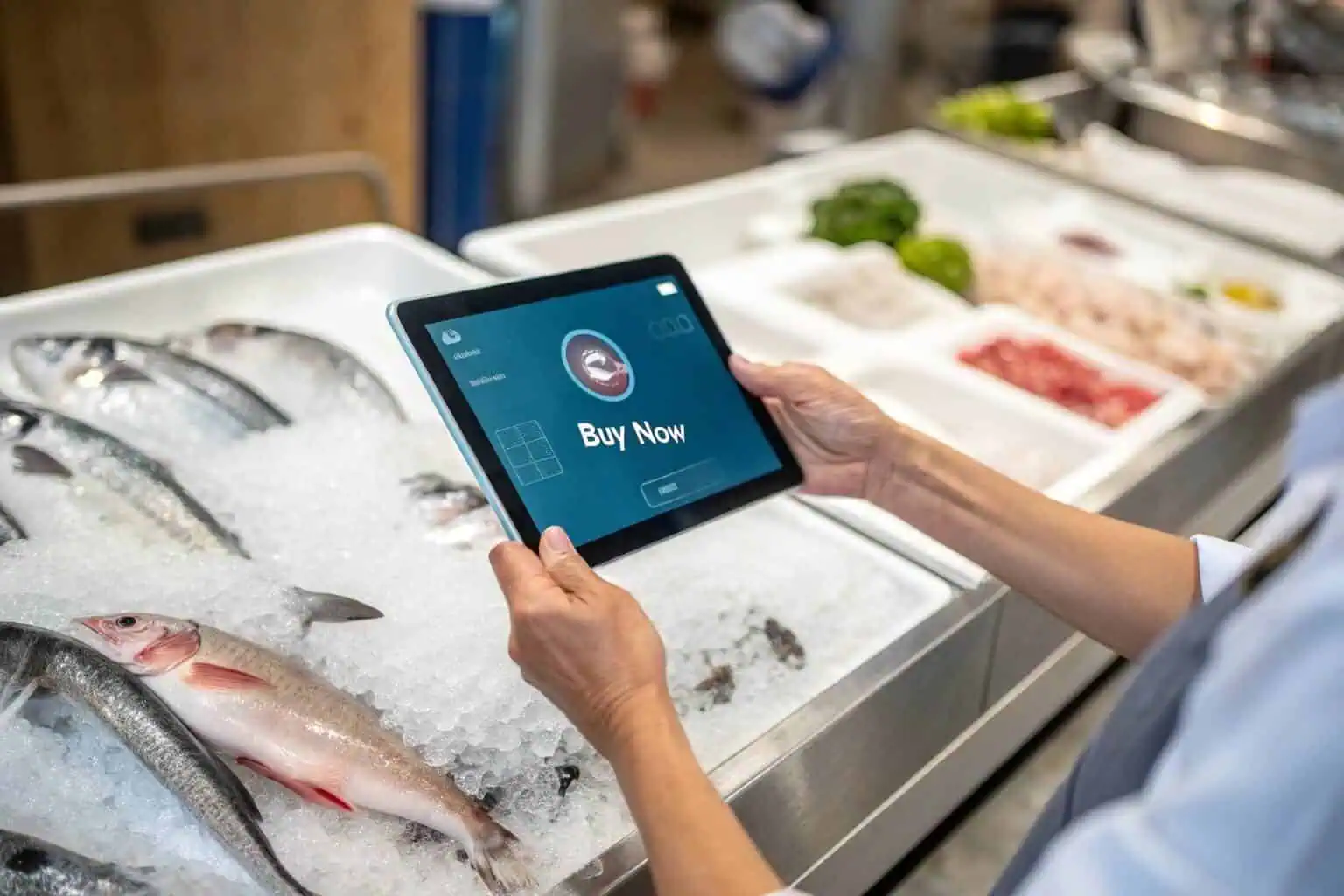
The way fish is sold is a reflection of changing consumer habits16 and technological advancements. I've seen a fascinating blend of old and new in this industry, with technology creating exciting new opportunities for sellers and buyers.
The Evolution of the Fish Market
The traditional fish market17, with its vibrant atmosphere and personal interactions, still plays a vital role, especially in coastal communities. It's a place where relationships are built and where consumers can get the freshest catch of the day. However, this model is being complemented by more modern approaches that offer greater convenience and reach.
The Rise of Direct-to-Consumer (D2C) Sales
The rise of e-commerce has opened up new frontiers. Online platforms allow fish farmers and fishermen18 to sell directly to consumers, cutting out the middlemen and offering a fresher product. Subscription models, similar to community-supported agriculture (CSA), are also gaining popularity, providing customers with a regular supply of fresh fish. This direct connection fosters trust and loyalty.
Technology in B2B Fish Sales
For B2B sales, technology has streamlined the process. Online portals make it easier for restaurants and retailers to place orders, track shipments, and manage inventory. Data analytics is also becoming a powerful tool, helping sellers to better understand market trends and consumer preferences, ensuring that the right fish gets to the right place at the right time.
| Technology | Application in B2B Sales | Benefits |
|---|---|---|
| Online B2B Portals19 | Centralized platforms for restaurants and retailers to place orders. | Streamlined ordering, real-time inventory tracking, efficient communication. |
| Data Analytics20 | Analyzing sales data to understand market trends and customer behavior. | Improved forecasting, targeted marketing, optimized pricing strategies. |
| Blockchain | Tracking fish from farm to table to ensure transparency and traceability. | Enhanced food safety, increased consumer trust, verification of sustainability claims. |
| Automated Inventory Management | Systems that automatically track stock levels and trigger reorders. | Reduced manual errors, prevention of stockouts, improved supply chain efficiency. |
Conclusion
Selling fish, whether from a farm or the open sea, is a dynamic process that blends tradition with innovation, offering diverse opportunities for those in the aquaculture industry.
-
Exploring resources on starting an aquaculture business can provide valuable insights and strategies for your venture. ↩
-
Explore this link to understand how specialized hatcheries enhance fish farming efficiency and sustainability. ↩
-
Explore this resource to learn how traditional ponds can be a cost-effective and simple solution for raising hardy fish species. ↩
-
Explore this link to understand how RAS can optimize fish farming with controlled environments and sustainability. ↩
-
Discover the versatility and advantages of collapsible tanks for small-scale aquaculture setups. ↩
-
Explore proven sales strategies to maximize earnings and adapt to market fluctuations in the fishing industry. ↩
-
Explore this link to learn effective strategies for selling popular seafood directly, maximizing profit margins and building customer relationships. ↩
-
Explore this resource to understand how CSF programs can help fishers build direct relationships with consumers and increase profits. ↩
-
Explore this link to learn effective strategies for building relationships and increasing sales with local restaurants and retailers. ↩
-
Learn about the advantages of working with processors and wholesalers for handling large volumes and expanding market reach. ↩
-
Learn strategies to improve efficiency and profitability in fish farming operations. ↩
-
Understanding the scale of operation helps determine the potential profitability and risks involved in aquaculture. ↩
-
Exploring large-scale aquaculture provides insights into its profitability, investment needs, and risk management. ↩
-
Explore this link to learn about high-demand fish species like salmon and shrimp that can maximize your profits. ↩
-
Discover effective strategies to optimize feed expenses and improve overall profitability in fish farming. ↩
-
Learn how evolving consumer preferences are shaping the way fish is sold and marketed. ↩
-
Explore this link to understand how traditional fish markets support local economies and foster community relationships. ↩
-
Explore this resource to discover top online platforms that help fish farmers and fishermen reach customers directly, ensuring fresher products and better profits. ↩
-
Explore top online B2B portals to enhance your ordering process and improve communication with suppliers. ↩
-
Learn how data analytics can help you understand market trends and optimize your sales and marketing efforts. ↩